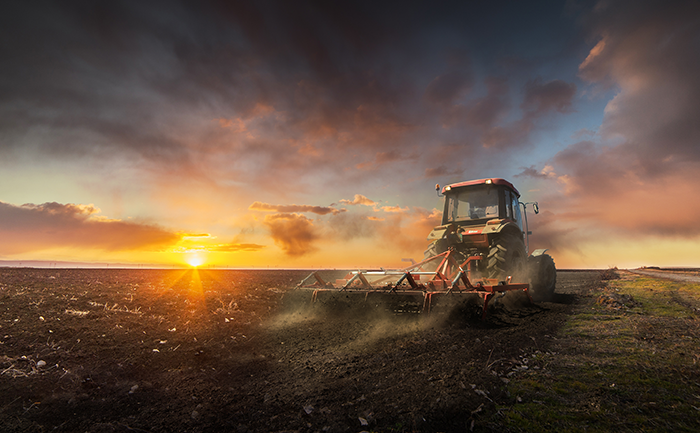
Soil can become compacted from heavy trampling with livestock grazing on pastures or frequent tractor traffic over hayfields. Severe compaction can reduce plant growth by restricting rooting and limiting water infiltration. But when is soil considered to be severely compacted? This question could be diagnosed visually, which is a good first step of recognition, but doing so might not accurately assess the underlying conditions.
From a soil science perspective, compaction is typically diagnosed with a cone penetrometer, by sampling soil for bulk density, or by deploying an in-field water infiltration test. A variety of tools and methods can be used for each test, though some are more accurate than others. Although it might seem redundant to use all three methods, each approach assesses compaction from a different perspective, and these different perspectives offer unique insights.
All methods are sensitive to moisture variations, but the penetrometer is particularly sensitive. With that said, the penetrometer is the easiest method to deploy — one can simply count the number of hammer hits needed to insert a metal rod into the ground to a 6-inch or 1-foot depth. This simple approach can be used on fields you think are compacted and compared to results with fields you consider not compacted. Again, soil moisture plays a large role in the results, such that wet soil is much easier to penetrate than dry soil. Standardize the approach by taking measurements two days after a 2-inch rainfall and use the same hammer and stroke force. Repeating observations in different locations will give you confidence in the results.
Rev up the ripper
Once you are convinced you have compaction, you should also assess how the field got to this condition. Repeating the same management as before will not be a good strategy moving forward. Alleviation of compaction is typically achieved through mechanical means, such as running a ripper that has straight shanks, V-shanks, or bent shanks. These tools fracture the soil to create more pores but leave surface residue and sod more or less intact. The spacing of shanks, depth of penetration, and soil moisture conditions will determine the horsepower needed to effectively alleviate compaction. Approximately 30 to 40 horsepower is generally needed per shank. It costs about $75 per hour to run the tractor and ripper.
The slices through the sod will heal with time, and the disturbance may enhance tillering or encourage spreading of rhizomes, depending on forage type. Since this disturbance can be considered a surgery on the soil, it would be wise to allow the sod to rest and recover for a few months. Depending on the type of forage present and whether there is a need to enhance species diversity, overseeding with annual or perennial forages may be advantageous prior to ripping to allow seeds to be incorporated into the soil. Assuming there is a rest and recovery period, this will allow new roots to penetrate the disturbed soil and help stabilize fractures in soil with organic inputs from fresh roots. Soil will slowly reconsolidate with precipitation events but quickly reconsolidate if the return of livestock or equipment traffic comes too soon.
The best time to consider renovating a pasture with ripping is in the fall, preferably when the soil has dried out so the shanks effectively fracture the soil. Some moisture will require less energy to run the ripper, but wet soil can result in smearing of soil that may only exacerbate the compaction issue. If the perennial sod is a cool-season forage, then regrowth may be more vigorous during the recovery period in the fall. If the perennial sod is a warm-season forage, then it would be advisable to overseed with a cool-season annual forage species or mixture of species to get active rooting during the recovery period. Proliferation of roots is necessary to avoid too much reconsolidation right away. If soil testing indicates a need for lime or nutrients, it may be a good time to supply these amendments shortly before the renovation as well.
After you’ve successfully renovated the pasture, manage the sward with attention to avoid overgrazing. Limit grazing events to short periods when soil is wet. When you invest a considerable amount of your time, deferred grazing time, and money into the renovation, having a solid grazing or forage management plan to keep the sward in excellent condition will yield long-term dividends.
Leave it in the shed
Renovating pastures with a ripper or subsoiler may not be the right choice if compaction is not severe. Employing more intensive grazing and forage management to improve rooting may be a more economical strategy and heal soil conditions just as effectively. Even with trampling by livestock, the top 4 inches of soil is typically of low bulk density in perennial stands.
In North Carolina, the middle 50% of soil bulk density values under pastures ranged from 1.11 to 1.24 grams per cubic centimeter (g/cc) in fine- and medium-textured soils and ranged from 1.21 to 1.38 g/cc in coarse-textured soils across 309 fields. If bulk density exceeds about 1.5 g/cc, then you might want to consider ripping. Otherwise, focus on improved management.
The health of soil on your farm will lead to greater potential for profitability in the long term. Stewarding the land with a focus on soil health gives you and your community numerous other ecosystem benefits. These include better water quality, reduced greenhouse gas emissions, biodiversity enhancement, wildlife habitat, and landscape beauty. If pasture renovation to alleviate compaction is needed to achieve your goals, then it may be an opportunity to further improve forage and grazing land management into the future.
This article appeared in the August/September 2025 issue of Hay & Forage Grower on page 16.
Not a subscriber? Click to get the print magazine.

